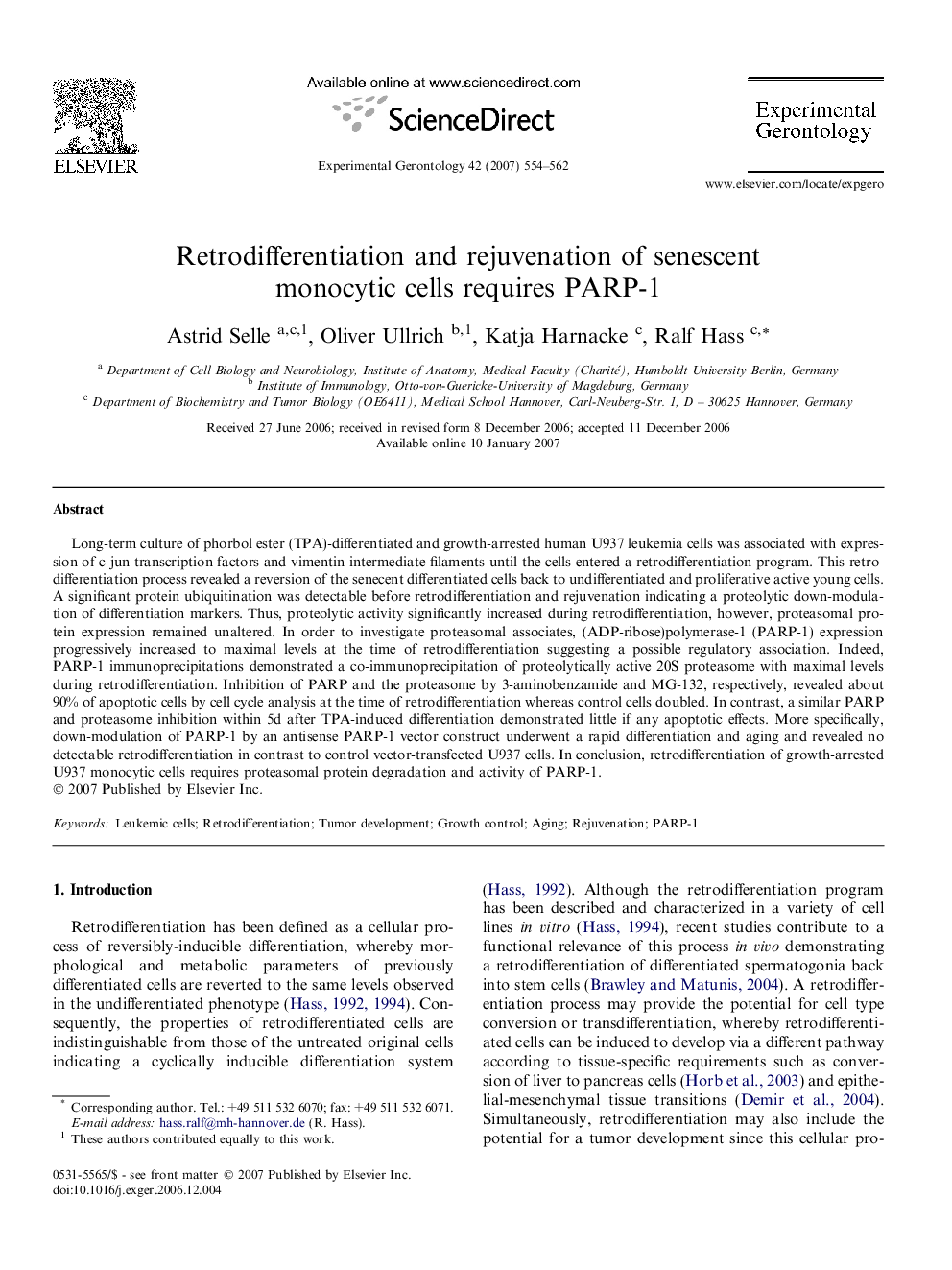| Article ID | Journal | Published Year | Pages | File Type |
|---|---|---|---|---|
| 1907576 | Experimental Gerontology | 2007 | 9 Pages |
Long-term culture of phorbol ester (TPA)-differentiated and growth-arrested human U937 leukemia cells was associated with expression of c-jun transcription factors and vimentin intermediate filaments until the cells entered a retrodifferentiation program. This retrodifferentiation process revealed a reversion of the senecent differentiated cells back to undifferentiated and proliferative active young cells. A significant protein ubiquitination was detectable before retrodifferentiation and rejuvenation indicating a proteolytic down-modulation of differentiation markers. Thus, proteolytic activity significantly increased during retrodifferentiation, however, proteasomal protein expression remained unaltered. In order to investigate proteasomal associates, (ADP-ribose)polymerase-1 (PARP-1) expression progressively increased to maximal levels at the time of retrodifferentiation suggesting a possible regulatory association. Indeed, PARP-1 immunoprecipitations demonstrated a co-immunoprecipitation of proteolytically active 20S proteasome with maximal levels during retrodifferentiation. Inhibition of PARP and the proteasome by 3-aminobenzamide and MG-132, respectively, revealed about 90% of apoptotic cells by cell cycle analysis at the time of retrodifferentiation whereas control cells doubled. In contrast, a similar PARP and proteasome inhibition within 5d after TPA-induced differentiation demonstrated little if any apoptotic effects. More specifically, down-modulation of PARP-1 by an antisense PARP-1 vector construct underwent a rapid differentiation and aging and revealed no detectable retrodifferentiation in contrast to control vector-transfected U937 cells. In conclusion, retrodifferentiation of growth-arrested U937 monocytic cells requires proteasomal protein degradation and activity of PARP-1.
